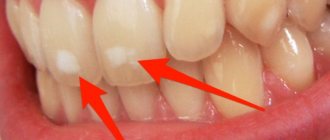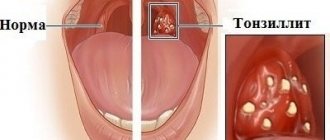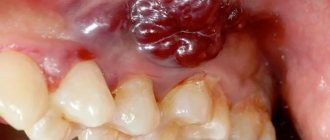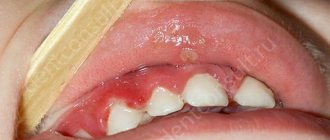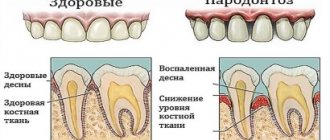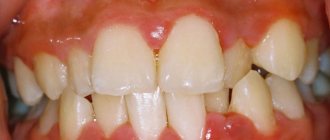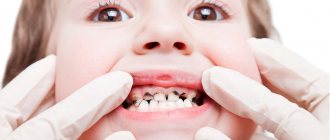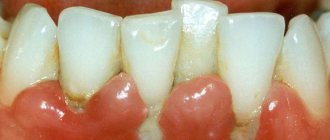Fluorosis is a disease of tooth enamel associated with prolonged exposure to excessive amounts of fluoride. It can be endemic and occupational in nature - develop in connection with living in a region where drinking water contains a lot of fluoride or be associated with working conditions and the amount of fluoride in the air.
Endemic fluorosis is common in regions where the amount of fluoride in a liter of drinking water exceeds 1.5 mg. The occupational form of the disease is much less common, usually among employees of the aluminum industry.
Causes and mechanisms of development
Fluorine is a microelement that enters the body with water and food and is involved in many physiological processes. It is found in high concentrations in human bone tissue and teeth. The incoming fluoride is not completely absorbed; the main share is fluoride dissolved in water. If a lack of a microelement increases the risk of dental caries, then an excess becomes the cause of the disease.
Fluorosis is most often observed in children during the eruption of permanent teeth. This applies to children, including those who previously lived in regions with high concentrations of fluoride in water. It is enough to live in such a region for up to 3-4 years. Excess fluoride also affects the buds of permanent teeth. In this case, milk teeth are not affected by the disease, since their rudiments are formed in utero, and excess fluoride is retained by the placenta and is not passed on to the baby.
An element concentration of 1.5 mg per liter of water will not lead to the development of fluorosis in adults. Drinking water containing 6 mg of fluoride per liter leads to illness.
Ask a Question
Prevention of fluorosis
To prevent the development of fluorosis in children living in a risk zone, it is necessary to transfer the newborn from breastfeeding to complementary feeding as late as possible; in the future, it is necessary to provide the child with a balanced diet, and, if possible, replace water with milk.
Additional intake of calcium and phosphorus will also help to avoid fluoride oversaturation, since it is these microelements that help remove it from the body. It will be useful to send your child on vacation to various health camps, to visit relatives in other regions, in order to temporarily change the water source. Toothpaste, rinses and flosses for the oral cavity for fluorosis and for its prevention should be chosen without fluoride compounds. It is especially important to exclude the use of fluoride toothpastes in children, since children do not yet know how to brush their teeth properly and swallow part of the toothpaste.
Fluorosis is a disease of the skeletal system and teeth, which can be acquired at any age. But the main risk of development still occurs in the period before the eruption of permanent teeth. All preventive measures will be 100% effective until the enamel of molar teeth in children is fully formed.
Classification of fluorosis
By origin, endemic and occupational fluorosis are distinguished. Despite the similar clinical picture, recommendations for undergoing a course of treatment for these two types of disease will differ. An occupational disease causes disease not only of the teeth, but also of the bones - osteoporosis, osteosclerosis. The diseases are accompanied by impaired joint mobility.
As the disease develops, vegetative-vascular disorders and liver pathologies occur, and the risk of cancer—osteosarcoma—increases. It is worth noting that stains on teeth with such fluorosis may be completely absent.
Based on clinical manifestations, researchers distinguish five forms of the disease:
- spotted;
- dashed;
- chalky speckled;
- erosive;
- destructive.
The first two forms are considered a mild form of the disease. Chalky-mottled fluorosis is classified as moderate fluorosis. The last two are severe forms.
One patient may experience several forms of clinical manifestations at once - different symptoms develop on different teeth and groups of teeth. Doctors note that the resulting form of the disease persists for life and does not change even with changes in the concentration of the trace element in drinking water.
Bleaching for fluorosis
Many people wonder if teeth whitening will help with fluorosis? This method can be applied to the streaked or spotted form, when the spots still have a white tint. Whitening will even out the color of teeth and stains. Minor defects can also be sanded down and the enamel remineralized. If the spots darken, it will be possible to get rid of fluorosis only with the help of prosthetics with orthopedic structures such as veneers, lumineers or crowns.
Symptoms and manifestations
Endemic dental fluorosis manifests itself as white spots or characteristic stripes on the enamel. As the disease progresses, they acquire a yellow or even brown tint. The incisors of the upper jaw are most often affected, but at high concentrations of fluoride, damage to all teeth occurs. Increased abrasion of the enamel is observed, chips and erosions form. Symptoms depend on the form of the disease.
Line
This form of the disease is characterized by the appearance of white stripes on the outer surface of the incisors. Sometimes they are pronounced, but more often they are noticeable only when the enamel surface dries. In some cases, the stripes merge into large spots, but the doctor will detect separate stripes in the structure of the spot.
Spotted
With this form, multiple white spots appear that merge with each other. The surface of the stain is shiny and smooth, without roughness. There are no clear boundaries of the stain - it smoothly transitions into healthy areas of the enamel.
Chalky mottled
With this form of enamel fluorosis, a matte tint appears on the entire surface of the hard tissues of the tooth. Clearly defined spots and dots appear on the surface. In some cases, the enamel becomes yellow. In addition, areas of destruction may be observed on the teeth: speckled depressions with a diameter of up to 1.5 mm and a depth of up to 0.2 mm. The bottom of such depressions is pigmented.
This form is characterized by increased abrasion of the enamel, which exposes dentin - the deeper tissues of the tooth, which have a dark brown color. Sensitivity of teeth when dentin is exposed is pronounced.
Erosive
This form is distinguished by the presence of larger areas of enamel destruction - erosions. In the area of such a depression, there is no enamel at all, and increased abrasion is observed on the chewing surfaces of the teeth.
Destructive
In the destructive form of the disease, abrasion and erosion occurs not only of the enamel itself, but also of other hard tooth tissue - dentin. Teeth become brittle, large chips occur, and the shape of the crowns is disrupted. The body strives to prevent the opening of the tooth cavity by forming replacement dentin. This is a severe form of the disease that can develop in regions where drinking water contains at least 10 mg of fluoride per liter of water.
Forms of dental fluorosis
There are several forms of the disease, each of which has characteristic symptoms of fluorosis. The lesion is symmetrical in nature, most pronounced on the premolars, first and second molars, incisors and canines of both the upper and lower jaws, both on the outer and inner sides of the teeth. The classification of the disease is based on the degree of development of the disease. The following forms of fluorosis are distinguished: streaked, spotted, chalky-speckled, erosive, destructive.
Streaked form of fluorosis
The initial stage of the disease is characterized by the appearance of white stripes, weakly or strongly expressed on the tooth enamel. The chalky streaks become most noticeable when the surface of the tooth dries.
Fluorosis spots
Then the stripes merge and form white spots. A feature of the spotted form of fluorosis is that the enamel in the area of the spot becomes smoother and shiny. At this stage of development, the disease is often confused with caries in the spot stage. However, the differences are obvious: fluorosis appears immediately from the moment of teething and is multiple in nature, while caries forms locally, mainly in the area of contact with the gums and on the masticatory tubercles.
Chalky-mottled form with fluorosis
The chalky mottled form is characterized by darkening of the spots to yellow and light brown. At the site of their formation, the enamel becomes rough and uneven, and multiple dots and inclusions appear inside. The spots become clearly defined. It is necessary to distinguish fluorosis in the chalky-mottled form from enamel hypoplasia.
Erosive stage
During the erosive and destructive stage of fluorosis, loss of hard tooth tissues - enamel and dentin - occurs. Defects (erosions) become more noticeable, up to a change in the shape of the tooth crown and its breaking off in the future.
Subsequent progression of the disease is characterized by damage to the skeletal bones. A large accumulation of fluoride in the bones provokes osteosclerosis, osteoporosis, as well as the development of a cancerous tumor - osteosarcoma. This occurs if the patient continues to drink water with a fluoride concentration of more than 6 mg/l.
Diagnosis of fluorosis
Typically, diagnosing fluorosis is not difficult for a dentist. The spotted form of the disease may resemble a so-called chalk spot - the initial stage of caries or an area of enamel demineralization. However, in the case of fluorosis, such stains are multiple in nature and affect permanent teeth after they erupt. And initial caries develops singly or on a small number of teeth. A standard examination by a doctor is usually sufficient to make an accurate diagnosis.
One of the diagnostic features is the recommendation to submit drinking water for analysis, this will determine the concentration of fluoride in it. If elevated levels are detected, the doctor will prescribe changing the source of drinking water or purifying it before drinking. If you do not follow this recommendation, a severe form of the disease may develop, accompanied by tooth decay.
How is the diagnosis carried out?
The primary diagnosis is based on examination of the oral cavity and collection of anamnesis with a patient interview. It is very important to determine the place of residence of a person under the age of 3-4 years, as well as the presence of similar deviations in close relatives.
Instrumental diagnostics:
- measure the electrical resistance of hard tooth tissues - healthy enamel does not conduct current;
- luminescent diagnostics with staining - the study reveals subtle areas of enamel clouding and the presence of early erosions.
In differential diagnosis, it is necessary to compare general signs with the symptoms of early caries, hypoplasia, wedge-shaped defect and other non-carious enamel damage.
Typical symptom complex of fluorosis:
- white spots usually appear immediately after teething;
- there are several spots/stripes on one tooth at once;
- all or the vast majority of units of the dentition are affected, and not its individual structures.
Features of treatment
If you have enamel fluorosis, your doctor will recommend using fluoride-free toothpastes and mouth rinses. This recommendation applies to all cases and forms of the disease.
Removal of affected areas of enamel and filling are not used, since the likelihood of the filling falling out and further tooth destruction is very high. The doctor may prescribe phosphorus and calcium supplements to further strengthen hard tissues.
Mild forms of the disease are subject to cosmetic correction. Chemical, photo-whitening or laser teeth whitening can be used. After this, remineralizing therapy is necessarily performed: the doctor will apply preparations based on phosphorus and calcium compounds to the enamel using electrophoresis, ultraphonophoresis or application. Sometimes it is advisable to use mouthguards with a special composition inside - this procedure can be carried out both at home and in a dental office. The course of remineralizing therapy for this disease consists of 10-20 procedures, depending on the degree of tissue damage.
Chalky-mottled, erosive and destructive forms do not allow effective whitening. In this case, dental restoration can help achieve a cosmetic effect - installing lumineers or veneers. In severe cases, treatment of fluorosis is carried out by restoring teeth with artificial crowns made of metal-ceramics or ceramics.
Orthopedic treatment can not only eliminate a cosmetic defect, but also prevent further tooth decay, as well as cope with increased sensitivity.
Treatment
Treatment for dental fluorosis is selected taking into account the type of pathology, symptoms, and their severity. Preparation of defective areas followed by filling is ineffective, since the risk of further destruction of tooth tissue is high. To strengthen the enamel, calcium and fluoride-containing drugs
.
In the primary stages of the disease, a course of
teeth
whitening , followed by remineralization of the enamel. Chemical, laser, and LED methods are used. Bleaching for fluorosis is performed using safe products based on inorganic acids. The course of treatment involves 10-15 sessions. To consolidate the results of therapy, a repeat course is recommended after 8-10 months.
In moderate and severe forms of fluorosis, high-quality whitening is impossible. Aesthetic restoration methods are used:
- Installation of veneers, lumineers
- thin onlays (plates) made of porcelain, ceramics, zirconium are attached to the outer part of the tooth with a special compound. - Composite restoration
– the doctor sequentially, layer by layer, restores the tooth surface. Composite materials of different shades and light transmittance are used. This allows you to choose a natural shade; the restored units will not stand out from the crowd. - Prosthetics with crowns
- artificial metal-ceramic, ceramic crowns are fixed onto previously prepared fluorous teeth (depulped, ground).
An example of tooth restoration with zirconium dioxide crowns:
Orthopedic treatment is guaranteed to eliminate cosmetic defects, and also prevents further destruction of dental tissues and eliminates increased sensitivity of teeth.
Prognosis and prevention
The prognosis is favorable if the patient consults a doctor in a timely manner and follows all instructions. Even severe forms of the disease leave room for restoring the aesthetics of a smile using modern methods. But the sooner you contact a specialist, the less effort treatment of dental fluorosis will require.
The main direction of prevention is to reduce the amount of fluoride entering the body. When living in a region with a high concentration of trace elements in drinking water, it is important to find another source - consume purified water or purchase water brought from another region. You should also limit the consumption of fluoride-containing products: sea fish, spinach, butter, seaweed, etc.
It is important to stop using toothpastes, gels and rinses with fluoride. Please note that most children's toothpastes do not contain fluoride or aggressive abrasive particles.
The dentists at the STOMA clinic know how to treat fluorosis of all forms. We have ample opportunities for professional whitening and high-quality teeth restoration. You can make an appointment for an examination and consultation with a doctor by phone or through a special form on the website.
Fluorosis in children
Children's bodies are more sensitive to fluoride. The increased rate of metabolic processes leads to the rapid accumulation of this element in bones and organs, causing changes in their structure and functionality. The main impact falls on children living in conditions of excess fluoride until the age of 3 (the period of formation of the rudiments of permanent teeth). Large doses of the microelement destroy ameloblasts, the cells responsible for the development of enamel structures. At the same time, baby teeth can have a completely healthy appearance. They are rarely affected by fluorosis, since their formation occurs during the intrauterine period, when the child is reliably protected from excess fluoride by the mother’s placental barrier.
Attention! Children's toothpastes should contain reduced levels of fluoride or no fluoride at all. This is especially true for regions where fluoridation of drinking water is practiced.
The optimal level of fluoride content in water
The safe intake of fluoride depends on the person’s age and individual characteristics of the body. Average values for children and adolescents are up to 3 mg per day, for adults – up to 4 mg. The content of this chemical compound in drinking water in the Russian Federation is regulated by sanitary standards approved by the Decree of the Chief State Sanitary Doctor of the Russian Federation dated January 28, 2021 No. 2. The maximum permissible norm of fluoride = 1.5 mg/l, i.e. this is the maximum concentration, in fact in in many regions it is less. If you do not take into account the intake of the element from food, then to receive the maximum daily dose, an adult must drink a little more than 2.5 liters of tap water, and a child should drink even less - 2 liters. And if you add to this food rich in fluoride, the total dose can increase many times over. As a result, if an adult's regular intake of the element exceeds 6 mg per day, he will develop fluorosis. For a child, it is enough to exceed the dose of 4 mg.
Some statistics: in regions where drinking water contains about 1 mg/l of fluoride (this is considered the optimal indicator), about 12% of the population gets sick. If the indicator is 1.5 mg/l, then the incidence increases to 30%.
Causes of dental fluorosis and why symptoms appear
The exact causes of this disease are not yet known. But several possibilities are being considered:
- fluoride compounds are toxic to ameloblasts (cells involved in the formation of enamel), and they lead to distorted formation of the enamel layer
- fluoride compounds, as enzyme inhibitors, suppress the activity of the phosphatase enzyme and disrupt the proper mineralization of enamel tissue
- excess incoming fluoride additionally interacts with ions of calcium, magnesium, manganese and trace elements, and this disrupts the proper mineralization of enamel tissue
- fluoride affects the activity of the thyroid gland, changing its functions during the formation of tooth enamel.
The exact mechanisms of changes in enamel tissue during fluorosis are also not fully understood. It is believed that in the initial stage, damage and partial destruction of the crystalline prisms that make up the enamel layer occurs. The spaces between the prisms widen and are filled with material of an amorphous structure (in fact, with the material of destructed prisms). In these spaces (the primary lesion zone), heterogeneous mineralization of the enamel tissue occurs, i.e. areas with increased and decreased mineralization alternate. Further development of the lesion is associated with the processes of demineralization and increased pathological permeability of the enamel layers, the appearance and increase in the size of micropores.
Treatment of illness at home
- First of all, to treat the disease at home, it is necessary to reduce the intake of fluoride into the body and ensure proper dental care. To do this, you need to use the following recommendations:
- If there is a high fluoride content in drinking water and it is not possible to completely abandon it, you can use special filters designed to defluoridate it.
- Water can be boiled or frozen. Freezing is carried out in a suitable container. Once the liquid is completely frozen, it is left to defrost at room temperature. In this case, it is necessary to observe the process until one or more small ice cubes remain in the liquid. They need to be removed and thrown away, since this is where harmful substances and trace elements of fluoride are collected.
- It is recommended to use special toothpastes for the treatment and prevention of the disease. They contain chelating and remineralizing agents that help restore damaged areas and prevent further destruction of foci of fluorosis. For example, ASEPTA PLUS REMINERALIZATION paste will help reduce the rate of enamel destruction. It does not contain fluorides or aggressive abrasives and is suitable even for sensitive teeth.
- Do not use teeth cleaning products or mouthwashes that contain fluoride.
- It is necessary to limit the consumption of fluoride-containing products. The diet should include foods rich in phosphorus and potassium, as they help quickly remove excess fluoride from the patient’s body.
- Recommended supplements:
- Lactic acid salts.
- Salts of pyruvic acid.
- Calcium.
- Magnesium.
- Vitamins A, B, C, R.
Manifestations of the disease
Symptoms depend on the form and severity of the disease. At the very beginning (at the stage of spotty or streaked form), areas with a changed color appear on the surface of the tooth. Stripes and lines are also visible. The enamel itself becomes rough, and small bulges appear.
Subsequently, small spots lead to the formation of larger pathological areas. Inhomogeneous mineralization of tooth enamel occurs. It breaks down and takes on a dull, matte color. At the same time, the smoothness and shine disappears.
A person with fluorosis complains:
- to increase sensitivity to temperature stimuli;
- cosmetic defect, as the color of the enamel becomes yellowish or light brown;
- fragility and rapid wear of teeth;
- frequent chipping;
- multiple caries.
X-rays reveal areas with reduced density, which indicates the process of demineralization, that is, a decrease in mineral substances in the enamel structure. It is for this reason that coloring substances are able to penetrate the porous structure of the tooth surface, which leads to the appearance of pigmented areas.
What is fluorosis
Tooth enamel is the strongest tissue in the human body. But it is also defenseless against the effects of various chemical compounds. This also applies to fluorides, which have a toxic effect on enamel during its maturation phase. They do not allow it to fully form and as a result, spots form. Consequently, the mechanism of onset of this disease occurs at the stage of formation of dental elements. These are different age periods of a person’s life: from birth to 4 years (incisors and premolars), 4 – 6 years (first and second molars), after 6 years (third molars). The pathology is called fluorosis. In addition, the disease can begin in adults with a significant increase in the concentration of fluoride in the body.
Fluorosis is a dental disease characterized by the formation of non-carious spots of various shapes and shades on the dental enamel layer. Enamel changes pigmentation due to the toxic effects of fluorides entering the human body with food and water. Scientists, using micro-radiographic studies, have proven that the density of dental tissues that have fluorous spots is much less than in healthy areas. This explains the change in pigmentation of the affected areas due to the easier penetration of coloring substances from food and drinks consumed by a person.
Note: a child’s body, due to its physiological characteristics, absorbs much more fluoride than an adult. This is another fact that explains the predominant onset of fluorosis in childhood.
Symptoms of disease development
Common symptoms of fluorosis include:
- Loss of the natural shade of tooth enamel.
- The appearance of white spots, yellow or yellow-brown spots, or the appearance of any pigmentation on the surface of the teeth.
- Pigmentation may also appear on the lingual part of the mouth.
- Tooth enamel loses sensitivity to any type of irritant.
- The enamel wears off over time.
- Possible damage to bone tissue, muscles, nervous system and some internal organs. These symptoms usually appear at an advanced stage of the disease.
